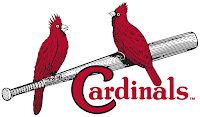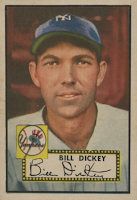Jesse Joseph Haines
St. Louis Cardinals
Pitcher
World Series Appearances: St. Louis Cardinals 1926, 1928, 1930, 1934
Died: August 5, 1978, Dayton, OH (85)
Hall of Fame Induction: 1970
Jesse Haines pitched in six minor league seasons between 1914 and 1919, interrupted by one game with the Reds in 1918, before going on to author a Hall of Fame career with the Cardinals over 18 impressive years. Haines was a workhorse for St. Louis before and during their Gashouse Gang dynasty. He joined the Cardinals' pitching rotation for good in 1920, throwing a career-high 301 2/3 innings. Haines threw a no-hitter against the Braves on July 17, 1924 and won his first of three World Series rings in 1926. His career year came in 1927 when he was 24-10 with a 2.72 ERA while leading the league in complete games (25) and shutouts (six). Haines was a 20-game winner in three different seasons. Affectionately given the nickname "Pop" during his later years, Haines was known as a kind gentleman off the field but a fierce competitor on it. He relied on an effective knuckleball later in his career, pitching in the majors until he was 43. He served on the Brooklyn Dodgers' coaching staff for one season in 1938.
Haines was 210-158 lifetime, with a 3.64 ERA and 209 shutouts. The Veteran's Committee inducted him into the Hall of Fame in 1970, and the Cardinals added Haines to their Hall of Fame in 2014.
Building the Set
December 16, 2020 from Albion, NY
Within days of officially deciding to collect the Diamond Stars set, I found myself searching for the 1993 extension set consisting of 36 more "what if" cards this time issued by the Chicle Fantasy Company. Individual cards from this set are very prevalent on eBay, but I wanted to buy a complete set to save myself some time and money. Given this is a relatively modern set, I was somewhat surprised at the closing auction prices for previously sold complete sets and I was happy to win my set at a lower price.
These cards are gorgeous, and I can tell a lot of hard work and love for the originals went into making this tribute set. What's more, the set's creators were smart enough to start the numbering with card #121, given the 1981 extension set had left off with #120.
Variations Available
1 - 1993 / blue back / 1935 statistics / 1993 copyright
The Card / Cardinals Team Set
The card covers all the highlights of Haines' Hall of Fame career, including his lengthy minor league beginnings, his one-game stint with the Reds and his World Series success. Pitching teammates Dizzy (#124) and Paul Dean (#125) are mentioned at the end of the write-up.
1936 Season
This was to be Haines' 18th and penultimate season in the majors. Limited to 25 games and only nine starts, he was 7-5 with a 3.90 ERA in 99 1/3 innings pitched.
|
|
|
|
|
Other Notable Baseball Cards
First Mainstream Card: 1921 Exhibits (W461)
Topps Flagship Set Appearances (0): N/A
Most Recent Mainstream Card: 2012 Panini Cooperstown Bronze History #38
129 - Haines non-parallel baseball cards in the Beckett online database as of 9/22/25.
Sources:
Previous Card: #131 "Bump" Hadley - New York Yankees
Next Card: #133 "Bad News" Hale - Cleveland Indians





%20Haines.png)






































%20%2328%20Foxx.png)










